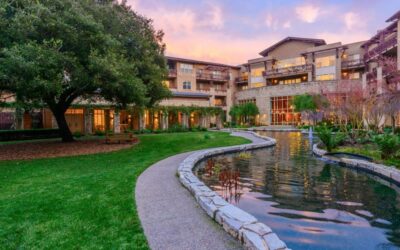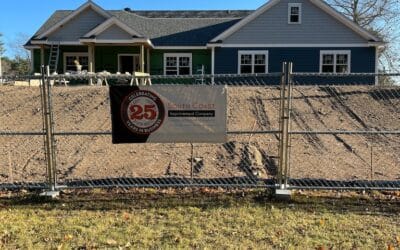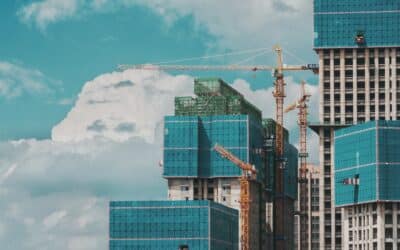Commercial and industrial construction stands as the bedrock of economic growth, providing the physical spaces necessary for businesses to operate and industries to thrive. Property developers are instrumental in bringing these spaces to life, and as they tackle the dynamic landscape of construction, staying updated on emerging trends, choosing the right partners, and maintaining a forward vision are paramount.
In this comprehensive guide, we’ll explore the multifaceted world of commercial and industrial construction and provide invaluable insights for property developers navigating this integral field of development. Our focus will be rooted in how to capitalize on emerging trends, the unique importance of industrial facilities, how to select the best construction partners, the future of construction, and more.
What is Industrial Construction?
Industrial construction involves the planning, design, construction, and maintenance of facilities that focus on manufacturing, production, and industrial storage.
View Our Work
Evergreen Place: Pegasus Senior Living
The project included renovations of common areas, painting, and installing new carpets, and a fully remodeled dining room completed at night to not disrupt the resident’s daily lives. Eleven resident rooms were remodeled with new millwork, lights, paint, trim, base,...
Cardinal Cushing Centers
South Coast Improvement Company was hired to provide tenant improvements at the Cardinal Cushing Centers Group Residence. This fast-paced 22-week, construction project entailed construction of a single-family-style residence. We razed the existing structure on site...
Unlike commercial construction, which caters to consumer-facing businesses such as retail stores, offices, and service providers, industrial construction is primarily concerned with spaces that facilitate the production side of the economy. This includes factories, warehouses, power plants, distribution centers, and processing and manufacturing facilities.
Industrial projects often require a specialized understanding of the specific industry’s operations, adherence to rigorous safety and environmental regulations, and the ability to incorporate complex machinery and systems into the design. The goal is to create efficient, durable, and scalable spaces that can support the intensive demands of industrial activities and properly maintain every industrial building.
How Industrial and Commercial Construction Work Together
While industrial and commercial construction projects might cater to different ends of the business spectrum, they are profoundly interconnected, frequently functioning in tandem to support the broader economy.
Industrial construction creates the production powerhouses – factories, warehouses, and plants that manufacture goods or facilitate storage and logistics. On the other hand, commercial construction focuses on consumer-facing venues like retail stores, offices, and service centers, which are essential for distributing and selling the manufactured products.
These segments work together in a symbiotic relationship where the output of industrial facilities becomes the input for commercial businesses. For instance, a product manufactured in an industrial plant is then shipped to a warehouse (another industrial project), and eventually ends up in retail stores (a commercial project) where it reaches the consumer.
Furthermore, the growth in one sector can spur development in the other. An increase in manufacturing activities might lead to higher demands for retail and office spaces, prompting more commercial construction projects.
Besides the direct flow of goods, industrial and commercial constructions share trends and challenges. Both sectors are increasingly incorporating sustainable building practices and advanced technology like automation and smart systems to enhance efficiency and reduce environmental impacts. Collaboration between these sectors can lead to innovative construction methods and materials that benefit the entire industry.
By understanding the complementary nature of industrial and commercial construction, developers can identify unique opportunities for growth and investment in both areas, ensuring their projects contribute positively to the economic ecosystem.
Navigating Trends and Innovations in Commercial and Industrial Construction
The construction landscape, much like the buildings it creates, continues to evolve. New technologies, sustainable practices, and innovative design concepts are redefining the industry, shaping a future where structures are smarter and more adaptive.
Embracing Innovative Technology
From Building Information Modeling (BIM) that enhances design accuracy to drones that aid in surveying and project management, technology is revolutionizing the way projects are conceptualized and executed. The adoption of modular construction, 3D printing, and robotics are also on the rise, paving the way for more efficient building processes and greater quality control.
Sustainable Practices
In an era marked by environmental concerns, sustainable construction practices are not merely a trend but a necessity. Developers are increasingly turning to eco-friendly materials, green building certifications, and renewable energy solutions, such as solar panels and geothermal heating, to reduce the environmental footprint of their projects.
Advance Design Innovations
In addition to technological advancements and sustainable solutions, the industry is witnessing shifts in design philosophies.
Concepts like adaptive reuse, which repurposes existing structures for new uses, and biophilic design, which connects buildings with nature, are gaining traction. Such innovations not only result in more aesthetically pleasing structures but also contribute to the well-being of occupants and the surrounding community.
Navigating the Regulatory Landscape in Industrial Construction
The industrial construction industry is subjected to a dense web of regulations, more so than many other sectors, due to the nature and scale of its operations. These regulations are crucial for several reasons, pivotal among them being safety, environmental protection, and ensuring industrial reliability and efficiency.
Firstly, safety is paramount in industrial construction because these projects often involve the construction of facilities like chemical plants, power plants, and manufacturing factories, where the potential for hazardous conditions is significantly higher.
Strict adherence to safety regulations helps prevent accidents, protect workers’ health, and minimize the risk of catastrophic events that could have far-reaching impacts on communities and the environment.
Environmental regulations play a vital role as well, aimed at minimizing the ecological footprint of industrial activities.
These rules ensure that industrial construction projects incorporate sustainable practices, from the efficient use of resources to the reduction of emissions and waste. Given the scale at which these facilities operate and the potential for pollution or environmental damage, it’s imperative for industrial construction projects to align with stringent environmental standards.
Furthermore, the reliability and efficiency of industrial facilities are of utmost importance, as any downtime or inefficiency can lead to significant economic losses and supply chain disruptions. Regulations ensure that these constructions meet rigorous standards that underpin the operational integrity and longevity of industrial facilities, ensuring they can withstand the demands of high-capacity production environments.
In essence, the myriad of regulations governing industrial construction is foundational to ensuring that projects not only adhere to high safety and environmental standards but also contribute to the sustainable, efficient operation of the broader economy.
Developers navigating this complex regulatory landscape must be well-informed and proactive in compliance to ensure the successful completion and operation of their industrial projects.
Exploring Industrial Facility Importance and Evolution
Industrial construction fulfills a specific set of needs and carries unique considerations that differ from commercial projects. Understanding these nuances is critical for successful project management and long-term value.
Types of Industrial Buildings
The term ‘industrial’ encompasses a wide variety of structures, ranging from warehouses to manufacturing plants, each designed to serve a specific function. Heavy industrial buildings, like power generation facilities or refineries, pose additional challenges due to specialized mechanical and structural components.
The Importance of Proper Maintenance of Industrial and Commercial Buildings
Maintaining industrial facilities is a continuous and rigorous process. Regular inspections and proactive repairs are vital to ensure that operations run smoothly and safely. Balancing scheduled maintenance with the need for uninterrupted production is a key challenge that requires strategic planning and a dedicated team.
Selecting the Perfect Construction Partner
The success of any construction project is heavily dependent on the construction partner chosen. Selecting a partner with the right skill set, experience, and industry knowledge can make all the difference.
What To Look For In Industrial Construction Companies
Developers should look for firms with a solid reputation, a history of completing projects on time and within budget, and a portfolio that aligns with the desired project scope. Clear communication, ongoing support, and the ability to handle large-scale projects are also crucial criteria.
South Coast Improvement Company: The Perfect Partner For Your Commercial and Industrial Construction Project
Among the array of construction options, South Coast Improvement Company stands out as a reliable and experienced partner offering a wide spectrum of services in various sectors. With a focus on professionalism, preparedness, and client satisfaction, South Coast Improvement Company’s commitment to excellence ensures that projects meet the highest standards.
Tips for Maintaining a Successful Industrial Construction Site
A well-maintained construction site is integral to the safety and efficiency of operations. Implementing best practices and guidelines can help manage risks and streamline workflows.
Environmental Health and Safety (EHS) Standards
Adherence to EHS standards is non-negotiable. Regular training, the provision of appropriate safety equipment, and the establishment of clear protocols and emergency response plans are essential for keeping workers safe.
Efficient Workflow Management
Efficient material handling, logistics planning, and a lean approach to construction can significantly impact the speed and cost-effectiveness of the project. Lean practices minimize waste, improve productivity, and allow for greater flexibility in responding to changes.
Gazing into the Future of Commercial and Industrial Construction
The future of commercial and industrial construction promises to be a blend of technology, sustainability, and innovative design solutions.
As the industry continues to evolve, developers who are open to embracing new trends and partnering with experienced firms can expect successful outcomes that benefit all stakeholders involved.
Future of The Construction Industry
The future of commercial and industrial construction is a tapestry woven with smart city concepts, sustainable infrastructure, and digital transformation. Smart buildings with interconnected systems that promote efficiency and comfort, and projects that prioritize community and environmental well-being, are poised to become the norm.
Preparing for Innovation
As the industry sets its sights on the future, staying informed about emerging technologies, market trends, and regulatory changes is crucial. Continual professional development and the cultivation of an adaptable mindset are necessary for developers to remain at the forefront of the construction industry.
Commercial and Industrial Construction Projects Are Vital For Economic Growth!
Commercial and industrial construction are pivotal drivers of growth and innovation.
The path to success in construction is multifaceted, but with the right knowledge and approach, developers can transform the built environment and contribute to a sustainable, thriving economy.









